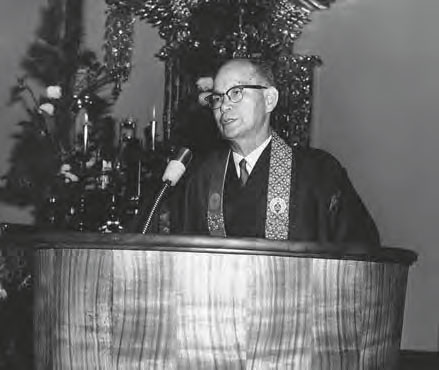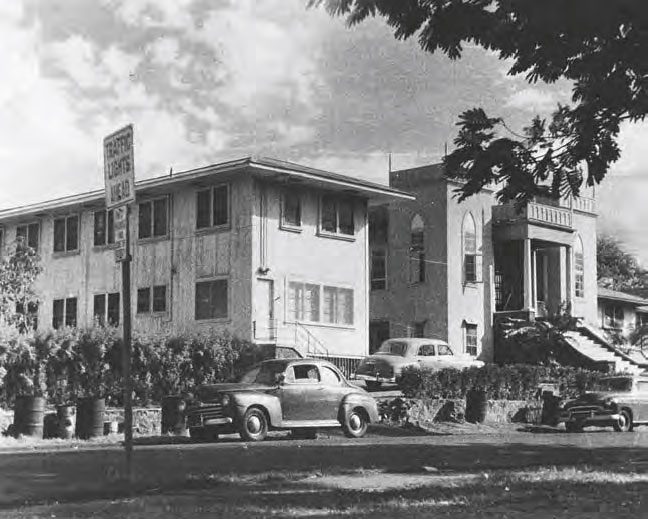
Jikoen’s Okinawan Roots
Honpa Hongwanji Mission of Hawaii and Jikoen
Oral History of the Rev. Jikai Yamasato as related to the Rev. Chikai Yosemori
By the time the first Okinawan immigrants (our ancestors) came to Hawaii, there were already an estimated 60,000 immigrants from other prefectures in Japan in Hawaii. Because they were newcomers and their language (dialect), customs, and traditions were different from the other Japanese people, Okinawans were often subjected to discrimination. Thus, even going to the temple with an ethnically Japanese membership was not an easy thing for Okinawans to do.

Upon learning of this situation, the leaders Honpa Hongwanji wanted to remedy this right away. They tried their utmost to educate everyone that the “the temple doors are always open for everyone.” Although this effort did not meet great success, it became a trigger for a number of Okinawan immigrants to attend temples in their communities. The temples in Waipahu and the Hamakua coast on the Big Island had the largest Okinawan memberships due to a large Okinawan population residing in these two communities.
In June 1936, Honpa Hongwanji transferred Rev. Chiro Yosemori, an associate minister and Japanese schoolteacher of Waipahu Hongwanji to Hawaii Betsuin. Since Rev. Yosemori was of Okinawan ancestry and had a following of Okinawan immigrants at Waipahu, Honpa Hongwanji hoped that by transferring Rev. Yosemori to Honolulu, he could attract the Okinawans in Honolulu to the temple as he did at Waipahu.
The Hawaii Betsuin continued to have a difficult time drawing people to the temple despite having an Okinawan minister. So, in addition to his duties at Hawaii Betsuin, Rev. Yosemori went to the heavily Okinawan populated area of Kalihi and propagated the Buddhist teachings. He also organized a group of people to communicate to the community that the Hongwanji’s doors were open to all. As this group grew, they wanted to have a temple of their own; however, there were no funds and the group was not yet large enough to initiate such an undertaking. So, their dreams did not quickly reach fruition.

Upon hearing their plight, the leaders of the Hawaii Betsuin encouraged Rev. Yosemori to pursue this dream and assured him of their assistance in this noble endeavor.
Rev. Yosemori, with the help of the leaders of the group, found a parcel of land on Houghtailing Street in front of the Royal Hawaiian Band practice hall, diagonally across from the Kalihi Pump Station of the Board of Water Supply. Leaders of the group helped to solicit contributions. They also took out a bank loan and asked Okinawan contractor, Mr. Jiro Higa (father of Mrs. Sachiko Teruya) to build the temple. It was completed in September 1938.
